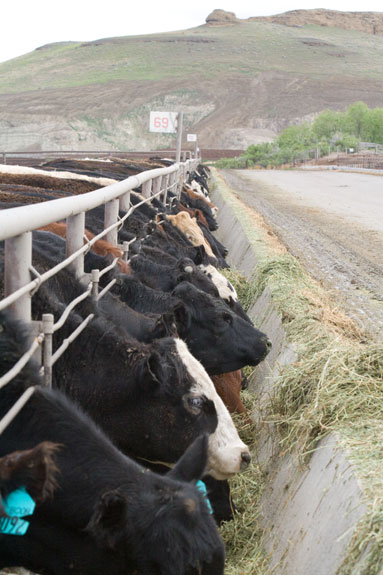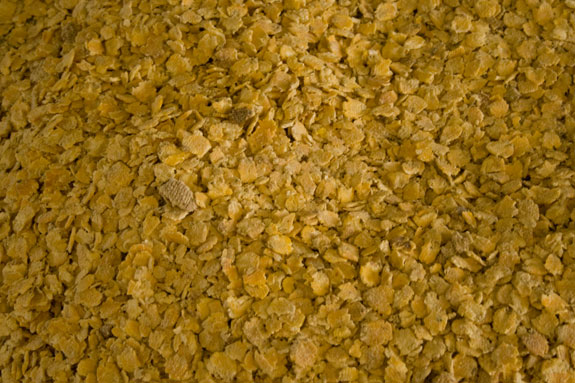"Although this is positive news for finished cattle prices, calves and feeder cattle still face the price-depressing burden of high feed costs. In the longer run, current high feed prices will keep the industry in a liquidation phase, and smaller beef supplies in coming years will be positive for returns for years to come," he said.

The cattle industry continues to adjust to high feed prices not only from the last three years, but also from the most recent increases in corn, distillers, and soybean meal costs. The longer-term adjustments continue to play out in the reduction of cow numbers, he said.
"The most recent surge in feed prices will likely keep producers from expanding until feed prices moderate. That will not be until the 2011 U.S. crops are assured, which is still at least 10 months away. This means cow numbers will not likely expand until 2012 and that beef supplies will not start to grow until 2014," he said.
In the past six months, the cattle industry was also responding to feed price signals. Last spring, the early planting of corn and optimism regarding yields dropped the U.S. average price of corn below $3.50 per bushel. Cattle feeders responded quickly by adding more cattle to feedlots. In May and June, placements were up 20 percent from the same months in 2009, he said.

"For the more extended period from May through August, placements averaged 9 percent higher. The recent sharp increases in corn and other feed ingredient prices are likely to send this fall's placements well below levels of a year ago when U.S. corn prices averaged $3.62 per bushel for the final quarter of 2009," Hurt said.
Expanding trade opportunities are important to cattle markets this year. The USDA expects beef exports to expand by 18 percent this year, with imports falling by 5 percent. The impact of more exports and less imports represents nearly 500 million pounds of beef that will not be available in the U.S. compared to last year. That represents almost 2 percent of domestic production and enhances finished cattle prices by $2 to $3 per hundredweight, he said.
"It is increasingly encouraging that Asian markets are leading the export volume increases so far this year. Purchases from South Korea are up 130 percent from last year with Japanese purchases up 21 percent. China is back in the market as well with an increase of 50 percent in beef purchases," he said.
Gaining back export markets after the first U.S. BSE cow was announced in late 2003 has been a long process, he noted.
"Even after this year's large gain in export volume, annual exports will still be only 91 percent of 2003 export tonnage," he said.
Smaller beef supplies will continue to support high finished cattle prices for the rest of 2010 and all of 2011. Per capita beef supplies in the U.S. will be down about 3 percent this year and an additional 1 to 2 percent in 2011, he said.
"Prices will be supported not only by reduced beef supplies but by strength in the world economy and some recovery in the U.S. economy, which will enhance demand. Recent high feed prices are expected to keep the hog industry from expanding and to cut into the previously expected 3 percent expansion in chicken production. Smaller supplies of competitive meats support beef prices," he noted.
According to Hurt, Nebraska finished steer prices averaged $93.75 in the first three quarters this year. That compares with an annual price of only $83.25 in 2009 when recession deflated demand. Assuming the prices in the final quarter of 2010 are about $98, 2010 will have reached a new record price of $94.80, exceeding the previous record high of $92.27 in 2008.
That record price is expected to be broken next year with Nebraska finished steers averaging in the low $100s. Prices are expected to be in the low $100s during the first quarter and then reach yearly highs in the second quarter when they may average about $105, he said.
"Expect prices to drop 2 to 4 dollars per hundred in the summer quarter and then finish the final quarter of 2011 in the very low $100s. Price forecasts tend to have large errors so consider a range of at least 3 dollars higher or lower from these forecasts," he said.
Some analysts miss the fact that higher feed prices eventually are reflected in higher meat prices. In the beef industry, feed prices which began to move higher late in 2006, are now reaching consumers as record-high beef prices. Consumers are in for many years of much higher retail beef costs, he noted.

"The retail price so far this year has averaged $4.37 per pound, exceeding the previous record of $4.29 for the same period in 2008. Early forecasts of retail prices in 2011 are $4.60 to $4.65 per pound, an increase of about 6 percent over the 2010 record price," he said.
The lofty level for next year compares with an average retail beef price of $3.84 per pound for the five years from 2002 to 2006, before the period of much higher feed prices. To be fair, the added retail costs of beef is a combination of both higher farm-level values, mostly due to high feed costs and higher costs involved in marketing margins, he said.
Record finished cattle prices for 2011 and higher feed costs are tugging feeder cattle and calf prices in opposite directions. Stronger finished cattle prices push calf prices up while higher feed prices push them down. The winner of that battle will depend on the relative changes in finished cattle and feed prices, he said.
"Although cow-calf producers would have received much higher prices for calves without the recent increase in feed prices, they should hold on to their cow herds because record finished cattle prices and, hopefully, cheaper feed in the fall of 2011 should result in much higher calf prices, perhaps for multiple years to come," he said. ![]()








